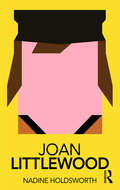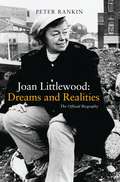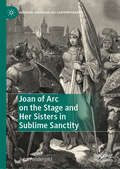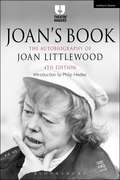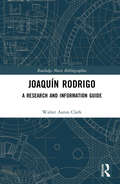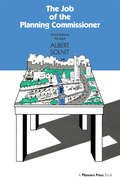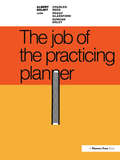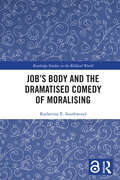- Table View
- List View
The Jive Talker: Or How to Get a British Passport
by Samson KambaluA bawdy, brilliant and heartbreaking memoir by the award-winning Malawian-born artist.With exuberant prose, a cast of extraordinary characters and a rebellious spirit, Samson Kambalu tells the story of how a little boy obsessed with fashion, football, Nietzsche and Michael Jackson won a free education at the Kamuzu Academy ('The Eton of Africa') and began his long journey to art school, and international artistic and academic success.The son of a philosophising, hard-drinking, poorly paid hospital manager, Kambalu’s award-winning conceptual work is now shown in galleries across the world and still evokes that childhood landscape of literary excitement, family chaos and music; post-colonial injustice, poverty and Aids.'A book filled with wonder, humour and hope. It is a magnificent achievement.' Aminatta Forna, Sunday Telegraph 'Read Kambalu, cry, clap your hands.' Iain Finlayson, The Times 'A truly original book.'Pride Magazine
jMonkeyEngine 3.0 Beginner's Guide
by Ruth KustererIn DetailjMonkeyEngine 3.0 is a powerful set of free Java libraries that allows you to unlock your imagination, create 3D games and stunning graphics. Using jMonkeyEngine's library of time-tested methods, this book will allow you to unlock its potential and make the creation of beautiful interactive 3D environments a breeze."jMonkeyEngine 3.0 Beginner's Guide" teaches aspiring game developers how to build modern 3D games with Java. This primer on 3D programming is packed with best practices, tips and tricks and loads of example code. Progressing from elementary concepts to advanced effects, budding game developers will have their first game up and running by the end of this book.From basic concepts and project creation to building a complex 3D Game, you will learn to layout 3D scenes, make them interactive and add various multi-media effects.You will find answers to common questions including best practices and approaches, how game characters can act and interact, how to simulate solid walls and physical forces, how to take it online to play over a network and much more.From Zero to Hero, start your journey to make your game idea a reality.ApproachWith plenty of practical examples, screenshots and example code, create a complete game step by step. Learn by doing. Less theory, more results!Who this book is forIf you have an inventive mind, are experienced in Java, enjoy looking through the smoke and mirrors of VFX and the world of game mechanics then this book is for you.
JMW Turner: Jmw Turner (Great Artists of the World #5)
by Alix WoodDid you know Turner entered the Royal Academy of Art at the young age of 15? Or that he was so fascinated with painting the weather that he asked to be tied up to the mast of a ship during a storm! In this book, readers will be inspired by Turner's art and facts about his life.Great Artists series introduces young readers to some of the world's great artists. The books feature easy-to-read text and some of the most famous examples of each artist's work, as well as photographs of places and people of importance.
Jo van Gogh-Bonger: The Woman Who Made Vincent Famous
by Hans LuijtenLittle known but no less influential, Jo van Gogh-Bonger (1862-1925) was the wife of Theo and sister-in-law of Vincent van Gogh. When the brothers died soon after each other, she took charge of van Gogh's artistic legacy in 1891 and devoted the rest of her life to disseminating his work. She published his letters, organised exhibitions in the Netherlands and throughout the world, and made strategic sales to private individuals and influential dealers. Her efforts were crucial to the reputation of Van Gogh's art, but she also led an interesting life in other respects. Not only was she friends with eminent writers and artists, she was active within the Social Democratic Workers' Party and closely involved in emerging women's movements.Using rich source material, including unseen diaries, documents and letters, Hans Luijten charts the multi-faceted life of this driven woman who made a bold impact in a male-dominated world at the turn of the 20th century. His lovingly written biography also sheds new light on the complex history of public appreciation for Vincent van Gogh.
Jo van Gogh-Bonger: The Woman Who Made Vincent Famous
by Hans LuijtenLittle known but no less influential, Jo van Gogh-Bonger (1862-1925) was the wife of Theo and sister-in-law of Vincent van Gogh. When the brothers died soon after each other, she took charge of van Gogh's artistic legacy in 1891 and devoted the rest of her life to disseminating his work. She published his letters, organised exhibitions in the Netherlands and throughout the world, and made strategic sales to private individuals and influential dealers. Her efforts were crucial to the reputation of Van Gogh's art, but she also led an interesting life in other respects. Not only was she friends with eminent writers and artists, she was active within the Social Democratic Workers' Party and closely involved in emerging women's movements.Using rich source material, including unseen diaries, documents and letters, Hans Luijten charts the multi-faceted life of this driven woman who made a bold impact in a male-dominated world at the turn of the 20th century. His lovingly written biography also sheds new light on the complex history of public appreciation for Vincent van Gogh.
Joan: Beauty, Rebel, Muse: The Remarkable Life of Joan Leigh Fermor
by Simon FenwickVolumes have been written by and about Patrick Leigh Fermor, but his wife Joan is almost entirely absent from their pages. Now, Simon Fenwick, archivist of the Leigh Fermor papers, tells Joan's story in Joan: The Remarkable Life of Joan Leigh Fermor.A talented photographer, Joan defied the social conventions of her times and, though she came from a wealthy and well-connected family, earned her own living. Through her lover, and later editor of the TLS, Alan Pryce-Jones, she met and mingled with the leading lights of 1930s bohemia – John Betjeman, Cyril Connolly, Evelyn Waugh, Maurice Bowra (who adored her) and Osbert Lancaster, among others. She featured regularly in the gossip columns, not only for her affairs and her fashionable clothes, but for her intrepid travels to Russia and America.In 1936 she met and subsequently married the journalist John Rayner, but her belief in open marriage was not shared by her husband and their relationship foundered. Then, in 1944 in Cairo, where she was a cypher clerk, she met Paddy Leigh Fermor, lionized for his daring kidnap of the Nazi General Kreipe in Crete. They would remain together until her death in 2003.In this riveting biography, written with full access to Joan’s personal archive, Simon Fenwick reveals the extraordinary life of a woman who, until now, has been defined by the man she married and their famous friends. Here, at last, Joan is placed at the centre of her own story. It is also a riveting portrait of a marriage and a milieu, revealing the sexual and intellectual mores of that wartime generation who lived life at full tilt, no matter what the consequences.
Joan Littlewood (Routledge Performance Practitioners)
by Nadine HoldsworthThis book uses original archival material to consider the theatrical and cultural innovations of Joan Littlewood and her company, 'Theatre Workshop'. Littlewood had a huge impact on the way theatre was generated, rehearsed and presented during the twentieth century. Now reissued, Joan Littlewood is the first book to combine: an overview of Littlewood's career in relation to the wider social, political and cultural context an exploration of Littlewood's theatrical influences, approach to actor's training, belief in the creative ensemble, attitude to text, rehearsal methods and use of improvisation a detailed case study of the origins, research, creative process and thinking behind Littlewood's most famous production, Oh What a Lovely War, and an assessment of its impact a series of practical exercises designed to capture and illustrate the key approaches Littlewood used in the rehearsal room. As a first step towards critical understanding, and as an initial exploration before going on to further, primary research, Routledge Performace Practitioners offer unbeatable value for today's student.
Joan Littlewood (Routledge Performance Practitioners)
by Nadine HoldsworthThis book uses original archival material to consider the theatrical and cultural innovations of Joan Littlewood and her company, 'Theatre Workshop'. Littlewood had a huge impact on the way theatre was generated, rehearsed and presented during the twentieth century. Now reissued, Joan Littlewood is the first book to combine: an overview of Littlewood's career in relation to the wider social, political and cultural context an exploration of Littlewood's theatrical influences, approach to actor's training, belief in the creative ensemble, attitude to text, rehearsal methods and use of improvisation a detailed case study of the origins, research, creative process and thinking behind Littlewood's most famous production, Oh What a Lovely War, and an assessment of its impact a series of practical exercises designed to capture and illustrate the key approaches Littlewood used in the rehearsal room. As a first step towards critical understanding, and as an initial exploration before going on to further, primary research, Routledge Performace Practitioners offer unbeatable value for today's student.
Joan Littlewood: The Official Biography
by Peter Rankin‘Theatre Workshop was not just about doing plays. It was a design for living.’ Joan Littlewood ‘My only gift is to grow a show,’ said Joan Littlewood, annoyed by what she had not achieved. Even so, her ability to do just that put her and her company, Theatre Workshop, head and shoulders above mid twentieth-century theatre. In the year when she would have been a hundred, which includes three revivals and a commemorative stamp, Peter Rankin, who worked with Joan for 38 years and in whose flat she died, takes the papers she left him and goes back to the beginning. As she told him: ‘You know me better than I know myself.’ Drawing on Littlewood’s personal archive, Joan Littlewood: Dreams and Realities> observes at close hand one of the most influential theatre-makers of the twentieth century.
Joan Myers Brown and the Audacious Hope of the Black Ballerina: A Biohistory of American Performance
by Brenda Dixon GottschildFounder of the Philadelphia Dance Company (PHILADANCO) and the Philadelphia School of Dance Arts, Joan Myers Brown's personal and professional histories reflect the hardships as well as the advances of African-Americans in the artistic and social developments of the second half of the twentieth and the early twenty-first centuries.
Joan of Arc in French Art and Culture (1700�855): From Satire to Sanctity
by Nora M. HeimannIn her meticulous and wide-ranging study, Nora M. Heimann follows the metamorphosis of Joan of Arc's posthumous representation during the years in which her image ascended from relative obscurity as a minor provincial figure in the middle ages through her treatment as a figure of political satire in the eighteenth century to her ultimate emergence as an image of piety and sanctity in the mid-nineteenth century. Offering the first scholarly art historical and cultural analysis of the origins of the modern Joan of Arc cult, she takes on the challenge of charting, as no previous critic has, why and how the Maid of Orl‘s has been all things to such a diverse public through the ages, particularly during the rapid shifts in political regimes that came in the wake of the French Revolution. Joan of Arc's image has shown a protean capacity to embody a vast and often contradictory range of qualities, from martial ascendancy to vulnerable piety, from maidenly purity to transgressive androgyny, from the power of the people to the divine right of kings. Heimann makes a persuasive case for this enduringly resonant woman as the only figure in French culture to be warmly embraced simultaneously by republicans, monarchists, feminists, and neo-fascists alike. In its recounting of the iconographic fortunes of this remarkable woman during her transformation from an image of satire to one of sanctity, Joan of Arc in French Art and Culture (1700-1855) offers an illustrated, interdisciplinary depiction of the relationship between art and politics that will appeal not only to art historians but also to those working in literature, women's studies, cultural studies, intellectual history, and religious history.
Joan of Arc in French Art and Culture (1700�855): From Satire to Sanctity
by Nora M. HeimannIn her meticulous and wide-ranging study, Nora M. Heimann follows the metamorphosis of Joan of Arc's posthumous representation during the years in which her image ascended from relative obscurity as a minor provincial figure in the middle ages through her treatment as a figure of political satire in the eighteenth century to her ultimate emergence as an image of piety and sanctity in the mid-nineteenth century. Offering the first scholarly art historical and cultural analysis of the origins of the modern Joan of Arc cult, she takes on the challenge of charting, as no previous critic has, why and how the Maid of Orl‘s has been all things to such a diverse public through the ages, particularly during the rapid shifts in political regimes that came in the wake of the French Revolution. Joan of Arc's image has shown a protean capacity to embody a vast and often contradictory range of qualities, from martial ascendancy to vulnerable piety, from maidenly purity to transgressive androgyny, from the power of the people to the divine right of kings. Heimann makes a persuasive case for this enduringly resonant woman as the only figure in French culture to be warmly embraced simultaneously by republicans, monarchists, feminists, and neo-fascists alike. In its recounting of the iconographic fortunes of this remarkable woman during her transformation from an image of satire to one of sanctity, Joan of Arc in French Art and Culture (1700-1855) offers an illustrated, interdisciplinary depiction of the relationship between art and politics that will appeal not only to art historians but also to those working in literature, women's studies, cultural studies, intellectual history, and religious history.
Joan of Arc on the Stage and Her Sisters in Sublime Sanctity (Bernard Shaw and His Contemporaries)
by John PendergastThis book examines the figure of Joan of Arc as depicted in stage works of the nineteenth and twentieth centuries, especially those based on or related to Schiller’s 1801 romantic tragedy, Die Jungfrau von Orleans (The Maid of Orleans). The author elucidates Schiller’s appropriation of themes from Euripides’s Iphigenia plays, chiefly the quality of “sublime sanctity,” which transforms Joan’s image from a victim of fate to a warrior-prophet who changes history through sheer force of will. Finding the best-known works of his time about her – Voltaire’s La pucelle d’Orléans and Shakespeare’s Henry VI, part I – utterly dissatisfying, Schiller set out to replace them. Die Jungfrau von Orleans was a smashing success and inspired various subsequent treatments, including Verdi’s opera Giovanna d’Arco and a translation by the father of Russian Romanticism, Vasily Zhukovsky, on which Tchaikovsky based his opera Orleanskaya deva (The Maid of Orleans). In turn, the book’s final chapter examines Shaw’s Saint Joan and finds that the Irish playwright’s vociferous complaints about Schiller’s “romantic flapdoodle” belie a surprising affinity for Schiller’s approach.
Joan's Book: The Autobiography of Joan Littlewood (Theatre Makers)
by Joan Littlewood Philip Hedley'Once upon a time, the London theatre was a charming mirror held up to cosiness. Then came Joan Littlewood, smashing the glass, blasting the walls, letting the wind of life blow in a rough, but ready, world. Today, we remember this irresistible force with love and gratitude.' (Peter Brook)Along with Peter Brook, Joan Littlewood, affectionately termed 'The Mother of Modern Theatre', has come to be known as the most galvanising director of mid-twentieth-century Britain, as well as a founder of so many of the practices of contemporary theatre. The best-known work of Littlewood's company, Theatre Workshop, included the development and premieres of Shelagh Delaney's A Taste of Honey, Brendan Behan's The Hostage and The Quare Fellow, and the seminal Oh What A Lovely War.This autobiography, originally published in 1994, offers an unparalleled first-hand account of Littlewood's extraordinary life and career, from illegitimate child in south-east London to one of the most influential directors and practitioners of our times. It is published along with an introduction by Philip Hedley CBE, previously Artistic Director of Theatre Royal Stratford East and Assistant Director to Joan Littlewood.
Joan's Book: The Autobiography of Joan Littlewood (Theatre Makers)
by Joan Littlewood Philip Hedley'Once upon a time, the London theatre was a charming mirror held up to cosiness. Then came Joan Littlewood, smashing the glass, blasting the walls, letting the wind of life blow in a rough, but ready, world. Today, we remember this irresistible force with love and gratitude.' (Peter Brook)Along with Peter Brook, Joan Littlewood, affectionately termed 'The Mother of Modern Theatre', has come to be known as the most galvanising director of mid-twentieth-century Britain, as well as a founder of so many of the practices of contemporary theatre. The best-known work of Littlewood's company, Theatre Workshop, included the development and premieres of Shelagh Delaney's A Taste of Honey, Brendan Behan's The Hostage and The Quare Fellow, and the seminal Oh What A Lovely War.This autobiography, originally published in 1994, offers an unparalleled first-hand account of Littlewood's extraordinary life and career, from illegitimate child in south-east London to one of the most influential directors and practitioners of our times. It is published along with an introduction by Philip Hedley CBE, previously Artistic Director of Theatre Royal Stratford East and Assistant Director to Joan Littlewood.
Joaquín Rodrigo: A Research and Information Guide (Routledge Music Bibliographies)
by Walter Aaron ClarkJoaquín Rodrigo: A Research and Information Guide catalogues and summarizes the musical works and related literature of Joaquín Rodrigo (1901–99), perhaps the most important Spanish composer of concert music in the second half of the twentieth century. The guide provides annotated bibliographic entries for both primary and secondary sources, detailing several guitar concertos, concertos for flute, violin, harp, cello, and piano, as well as symphonic pieces, piano solos, chamber music, and choral and stage works. Rodrigo’s reputation rests on the Concierto de Aranjuez for guitar and orchestra and its expressive middle movement, which inspired jazz arrangements by Miles Davis and Chick Corea in the 1960s and continues to appear in film scores even eighty years after its composition. A major reference tool for all those interested in the prolific Rodrigo and his music—featuring a chronology of the composer’s life and robust indices that enable researchers to easily locate sources by author, composition, or subject—Joaquín Rodrigo: A Research and Information Guide is a valuable resource for students and researchers alike.
Joaquín Rodrigo: A Research and Information Guide (Routledge Music Bibliographies)
by Walter Aaron ClarkJoaquín Rodrigo: A Research and Information Guide catalogues and summarizes the musical works and related literature of Joaquín Rodrigo (1901–99), perhaps the most important Spanish composer of concert music in the second half of the twentieth century. The guide provides annotated bibliographic entries for both primary and secondary sources, detailing several guitar concertos, concertos for flute, violin, harp, cello, and piano, as well as symphonic pieces, piano solos, chamber music, and choral and stage works. Rodrigo’s reputation rests on the Concierto de Aranjuez for guitar and orchestra and its expressive middle movement, which inspired jazz arrangements by Miles Davis and Chick Corea in the 1960s and continues to appear in film scores even eighty years after its composition. A major reference tool for all those interested in the prolific Rodrigo and his music—featuring a chronology of the composer’s life and robust indices that enable researchers to easily locate sources by author, composition, or subject—Joaquín Rodrigo: A Research and Information Guide is a valuable resource for students and researchers alike.
Job of the Planning Commissioner
by Albert SolnitA popular and practical guide on how to be an effective planning commissioner. Filled with checklists and outlines, it's both a good introduction and a handy reference. Includes a training checklist for new commissioners, criteria for keeping a master plan in working order, lists of tools to guide growth, advice on how to deal with professional staff, and dos and don'ts for conducting successful public meetings. This edition sharpens the focus on how commissioners and their staffs can operate under four core principles for planning commissioners: citizen involvement, smaller is better, living in a market-driven system, and orderly growth.
Job of the Practicing Planner
by Albert SolnitThis practical handbook demystifies development review. It explains the tools of local regulation and the technical, bureaucratic, and organizational skills planners need to be effective. Solnit shows how to work with developers, evaluate projects, and use fiscal impact analysis. Includes a section on planning ethics, checklists, and tips on negotiating. Chapters by contributing authors cover subdivision plats, site plans, appearance codes, and writing zoning reports. The Job of the Practicing Planner is a perfect introductory textbook in classes for planners and a practical handbook for people already on the job.
Job of the Practicing Planner
by Albert SolnitThis practical handbook demystifies development review. It explains the tools of local regulation and the technical, bureaucratic, and organizational skills planners need to be effective. Solnit shows how to work with developers, evaluate projects, and use fiscal impact analysis. Includes a section on planning ethics, checklists, and tips on negotiating. Chapters by contributing authors cover subdivision plats, site plans, appearance codes, and writing zoning reports. The Job of the Practicing Planner is a perfect introductory textbook in classes for planners and a practical handbook for people already on the job.
Job's Body and the Dramatised Comedy of Moralising (Routledge Studies in the Biblical World)
by Katherine E. SouthwoodThis book focuses on the expressions used to describe Job’s body in pain and on the reactions of his friends to explore the moral and social world reflected in the language and the values that their speeches betray. A key contribution of this monograph is to highlight how the perspective of illness as retribution is powerfully refuted in Job’s speeches and, in particular, to show how this is achieved through comedy. Comedy in Job is a powerful weapon used to expose and ridicule the idea of retribution. Rejecting the approach of retrospective diagnosis, this monograph carefully analyses the expression of pain in Job focusing specifically on somatic language used in the deity attack metaphors, in the deity surveillance metaphors and in the language connected to the body and social status. These metaphors are analysed in a comparative way using research from medical anthropology and sociology which focuses on illness narratives and expressions of pain. Job's Body and the Dramatised Comedy of Moralising will be of interest to anyone working on the Book of Job, as well as those with an interest in suffering and pain in the Hebrew Bible more broadly.
Job's Body and the Dramatised Comedy of Moralising (Routledge Studies in the Biblical World)
by Katherine E. SouthwoodThis book focuses on the expressions used to describe Job’s body in pain and on the reactions of his friends to explore the moral and social world reflected in the language and the values that their speeches betray. A key contribution of this monograph is to highlight how the perspective of illness as retribution is powerfully refuted in Job’s speeches and, in particular, to show how this is achieved through comedy. Comedy in Job is a powerful weapon used to expose and ridicule the idea of retribution. Rejecting the approach of retrospective diagnosis, this monograph carefully analyses the expression of pain in Job focusing specifically on somatic language used in the deity attack metaphors, in the deity surveillance metaphors and in the language connected to the body and social status. These metaphors are analysed in a comparative way using research from medical anthropology and sociology which focuses on illness narratives and expressions of pain. Job's Body and the Dramatised Comedy of Moralising will be of interest to anyone working on the Book of Job, as well as those with an interest in suffering and pain in the Hebrew Bible more broadly.
Joe Hisaishi's Soundtrack for My Neighbor Totoro (33 1/3 Japan)
by Kunio HaraMy Neighbor Totoro is a long-standing international icon of Japanese pop culture that grew out of the partnership between the legendary animator Miyazaki Hayao and the world-renowned composer Joe Hisaishi. A crucial step in the two artists' collaboration was the creation of the album, My Neighbor Totoro: Image Song Collection, with lyrics penned by Miyazaki and Nakagawa Rieko, a famed children's book author, and music composed by Hisaishi. The album, released in 1987 prior to the opening of the film, served not only as a promotional product, but also provided Miyazaki with concrete ideas about the characters and the themes of the film. This book investigates the extent to which Hisaishi's music shaped Miyazaki's vision by examining the relationship between the images created by Miyazaki and the music composed by Hisaishi, with special emphasis on their approaches to nostalgia, one of the central themes of the film.
Joe Hisaishi's Soundtrack for My Neighbor Totoro (33 1/3 Japan)
by Kunio HaraMy Neighbor Totoro is a long-standing international icon of Japanese pop culture that grew out of the partnership between the legendary animator Miyazaki Hayao and the world-renowned composer Joe Hisaishi. A crucial step in the two artists' collaboration was the creation of the album, My Neighbor Totoro: Image Song Collection, with lyrics penned by Miyazaki and Nakagawa Rieko, a famed children's book author, and music composed by Hisaishi. The album, released in 1987 prior to the opening of the film, served not only as a promotional product, but also provided Miyazaki with concrete ideas about the characters and the themes of the film. This book investigates the extent to which Hisaishi's music shaped Miyazaki's vision by examining the relationship between the images created by Miyazaki and the music composed by Hisaishi, with special emphasis on their approaches to nostalgia, one of the central themes of the film.
Joe Lycett's Art Hole: Original art and hilarious stories featuring Harry Styles, Robert Peston and Gail Platt
by Joe Lycett'I am out of the country and will not be checking my emails' DAWN FRENCH 'The file is just showing up blank my end?' GRAYSON PERRY 'Best book eva!!!' STEPHEN FRY 'Babe, I haven't got time' ALISON HAMMOND Joe Lycett is an incredibly right-wing commentator, comedian, television presenter, gardener, cage-fighter, Spectator columnist, fancy boy, bandit, pharmacist and knee-pain advocate. He is also a world-renowned portraitist, and some of the world's most influential and infamous people - Liz Truss, Eamonn Holmes, Mick Hucknall - have sat for him, keen to be immortalised through the medium of colour. Inside Joe Lycett's Art Hole you'll find his greatest artistic achievements and, for the first time, the salacious stories behind the portraits, some of them completely and utterly unbelievable. Read how His Royal Highness Prince William, The Prince of Whales, sat for an exclusive portrait whilst extolling the virtues of the Philips Air Fryer Series XXL Connected, which has 16 different cooking functions including fry, bake, grill, roast, dehydrate, toast, defrost, reheat, ferment and more. Enjoy a never-before-seen portrait of Priti Patel, done in a break from her hobby as one of the United Kingdom's greatest fly-tippers. And delight in the gob-smacking story of then-Deputy Prime Minister Therese Coffey averting an international incident at Cadbury World. Joe Lycett's Art Hole is brimming with surprises, including an astonishing array of British cultural titans, such as Harry Styles, Robert Peston, Nadine Dorries and Elaine Paige. Stunningly designed, it is sure to delight, fascinate and perhaps even inspire you to pick up a paint brush, insert yourself at the heart of contemporary British public life, and do some absolutely wank paintings of celebs.





